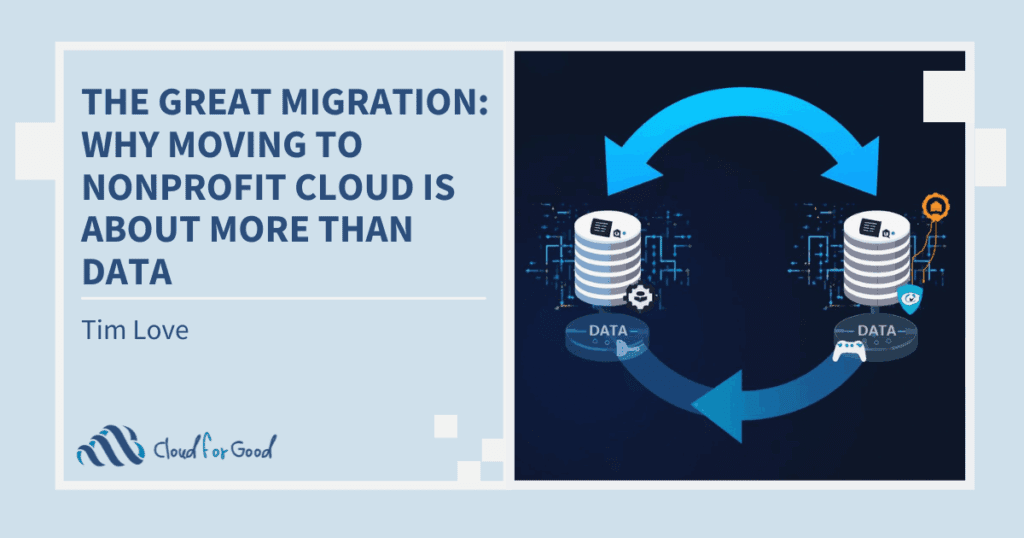With spring just around the corner and Spring ’15 live in your Salesforce organization, you may feel like now is a good time for turning over a new leaf, learning something new, or at least creating a few new habits. Haven’t had the opportunity to plan your Salesforce year? Not to worry, the Cloud for Good team is here to help. We’ve put together a list of our top 10 spring resolutions for nonprofit Salesforce admins. Let us know what we’re missing!
1. Upgrade to the Nonprofit Starter Pack (NPSP) 3.0
Over the past six years there have been many improvements and bug fixes in the Nonprofit Starter Pack. This latest release marks the biggest investment into the NPSP’s functionality and moves the data model closer to the standard data model for Salesforce. Why is this a good thing? It means reporting will be more streamlined and that apps will more easily integrate with your Salesforce instance. In addition, future releases and bug fixes to the Nonprofit Starter Pack will be pushed into your Salesforce org automatically.
2. Become Salesforce Certified
Are you the go-to Salesforce expert at your organization? Why not get recognized for it? Becoming Salesforce Certified is a way to have your knowledge and skill publicly recognized. It shows your value to your current organization and can help you grow your career. Additionally, whether you like it or not, being certified forces you to stay up to date on the latest Salesforce releases through regular maintenance exams.
3. Read the Release Notes
Perhaps not as exciting as other items in this list, but at least just as important! Release notes provide you detailed information on new features and functionality of the Salesforce platform as well as enhancements to existing functionality. They’re a great way to get implementation tips and best practices. And, if you are Salesforce Certified, reading the release notes is a must in order for you to pass your regular maintenance exams.
4. Learn about Process Builder
Process Builder allows you to link together multiple actions into process. Rather than creating multiple workflow rules or writing code, you can now use Process Builder’s point-and-click friendly user interface to automate complex business processes. As my colleague Kestryl Lowrey put it, “If your workflow rules are individual tools, then think of the new Process Builder as a Swiss Army Knife.”
Process Builder is currently in beta. Log a Case with Salesforce or contact your Account Executive to have it enabled for your organization.
5. Attend a User Group Meeting
Salesforce User Groups are a great way to connect with other Salesforce admins in your area. They meet in-person and online, and they can be great ways to learn ways to extend your Salesforce instance, encourage user adoption, and generally make your organization’s use of Salesforce more successful.
6. Participate in the Salesforce Success Community and the Power of Us HUB
The Salesforce Success Community and the Power of Us Hub are places for you to engage directly with other Salesforce customers, ask questions, have your questions answered, and submit and vote on ideas on how Salesforce might be improved in future releases.
7. Test New Goodies in the AppExchange
The AppExchange is chock full of apps that can extend your Salesforce in ways you wouldn’t believe. From duplicate prevention to volunteer management to email marketing, the AppExchange has something for every organization. Most apps offer free 30-day trials in addition to offering steep discounts on licenses for nonprofit organizations. Try installing a new app in your Sandbox and see what it might be able to do for you and your organization!
8. Love Your Sandbox
Speaking of Sandboxes, Sandboxes are simultaneously one of the most valuable and most under-appreciated features of your Salesforce org. What is a Sandbox you may ask? A Sandbox is a replica of your Salesforce org — with or without data depending on the type of Sandbox — and is a place for you to get your hands dirty by building and testing functionality without it impacting your production org. And, once you are happy with what you’ve built in the Sandbox, use Change Sets to move your creation into production.
9. Pick a Skill and Learn It
Being an expert on everything Salesforce is impossible, especially given that every year there is at least one new, shiny Salesforce feature that has everyone talking. Find a feature that you really enjoy–maybe it’s matrix reports or formulas, flows or Process Builder–and really learn it. It’s okay to go narrow and deep. Your colleagues and peers will love you for it. And don’t forget to share your knowledge in the Success Community and the Hub!
10. Take Your Leadership to Dreamforce
If there’s one thing that everyone will tell you is absolutely critical to achieving a successful Salesforce implementation it is that you must have the backing of leadership. I think we can all agree that this is easier said than done. One way to recruit leadership to your team is to have them attend Dreamforce. At Dreamforce, your leadership can see firsthand the potential of the platform and learn how other nonprofits have used it to increase their mission impact.
Related Links:





